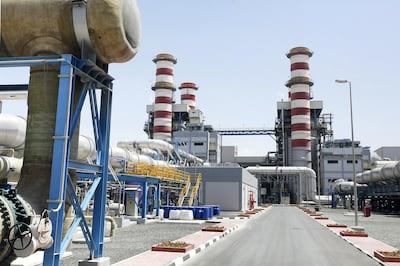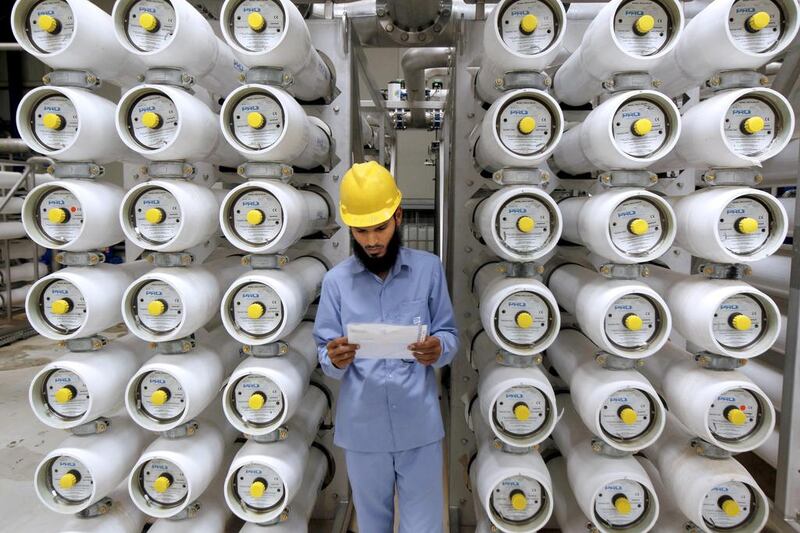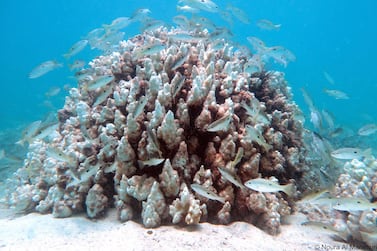Every time you turn on a tap, out flows a reminder of the technology that underpins the success of the Emirates. By making seawater drinkable, desalination supplies the single most important resource for human life.
Yet there has long been concern about its environmental impact. The concentrated brine it leaves behind is typically dumped back into the sea, prompting fears about its effects on marine life.
With the UAE’s desalination plants producing around one-fifth of the world’s brine – second only to Saudi Arabia – those fears are especially relevant to the Emirates.
But are they being overplayed? That possibility has been raised by the publication of a new UN-led report on the impact of desalination world-wide.
On the face of it, the findings of the report are disturbing. The authors found that the amount of brine churned out by treatment plants world-wide has been seriously under-estimated.
The authors calculate that the world’s 16,000 desalination plants produce around 95 million tonnes of drinkable water each day. But for every litre of water they produce, they also churn out almost 1.5 litres of brine – 50 per cent more than previously thought.
That's a particular concern for the Emirates, as most of the brine is pumped out near the coast, and even at its deepest, the Gulf is barely 100m deep. As a result, the salinity of the water has been rising for decades, and in places is already over 50 per cent saltier than typical sea water – prompting concern about the impact on the coastal environment.
In the report, published in Science of the Total Environment, the authors point out that the higher density of briny water can reduce dissolved oxygen levels, affecting marine life.
Following publication of the study, however, researchers have argued that while there is cause for concern, there is also evidence suggesting that the adaptability of organisms may have been under-estimated.
Instead of creating kill zones, the regions of saltier water around discharge outlets have been found to encourage life-forms.
Dr Riaan van der Merwe, an expert on the ecological impact of desalination plants at Khalifa University, UAE, told Nature Middle East that their outlets can provide the only signs of life for hundreds of metres.
Research by Dr van der Merwe and colleagues has also revealed that certain types of coral – widely believed to be especially susceptible to desalination waste – are much more resilient to the effects of salt than expected.
A study to be published next month by researchers in Israel has also found that bacteria and microscopic fauna can also flourish near desalination plants.
What is less clear is whether such changes are good for the ecosystem as a whole. Bacteria can be beneficial to the food-chain in some circumstances, but can have catastrophic effects in others.
In any case, saltiness is not the only problem. According to Dr van der Merwe, the fact that the brine discharge is relatively warm may be a bigger threat.
An increase of as little as 0.5 to 1.0 deg C can put some types of coral species under enormous stress.
Desalination also puts chemicals like anti-fouling agents into the sea, while the simple act of processing raw seawater leads to the death of countless small fish, crustaceans and other life-forms.
What all researchers agree on is that there is a lack of reliable long-term data on the impact of desalination.
The UN-led study showed that even the most basic information – such as how much brine desalination plants typically produce per litre of drinkable water – can be wide of the mark.
But with global demand for fresh water growing exponentially but less than 0.01 per cent of it being in lakes and rivers, understanding the effects of desalination is becoming a global issue.
One obvious way of reducing damage to the marine environment is to cut the amount of brine put back into the sea. Studies at inland storage ponds in the UAE have shown, however, that unless care is taken the rejected brine can seep into groundwater sources deep underground.

That has led to growing interest in a more radical approach, which sees the brine not as a waste product but as a resource.
Researchers in Brazil have been exploring the possibility of using the brine to grow certain types of algae which can tolerate salty water.
They include spirulina, a blue-green algae digestible by humans which has a high protein and vitamin content. It also has the remarkable ability to neutralise some of the noxious chemicals used in desalination.
Certain types of salt-tolerant fish are also being studied for a potential role in turning desalination waste into a resource.
Most attention has focused on tilapia, one of the most widely-harvested fish in the world because of its rapid growth and cheapness.
Originally a fresh-water fish, tilapia have adapted over time to thrive in salty water. In fact, so effective is their skin at protecting them from saltiness that researchers at the American University of Sharjah believe it may have potential as a membrane for desalination.
The need for such lateral thinking on desalination has never been more pressing. That’s because lurking within the technology is a nasty irony. The more it’s used, the greater the amount of brine dumped back into the sea – and the more expensive it becomes to desalinate.
For nations bordering the ever-saltier Gulf, it’s an irony that could prove especially bitter.
Robert Matthews is Visiting Professor of Science at Aston University, Birmingham, UK







